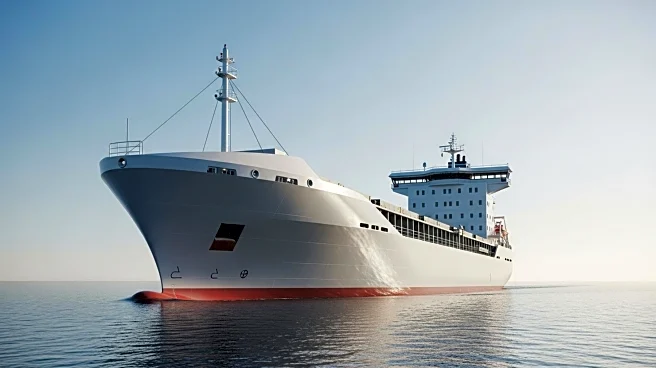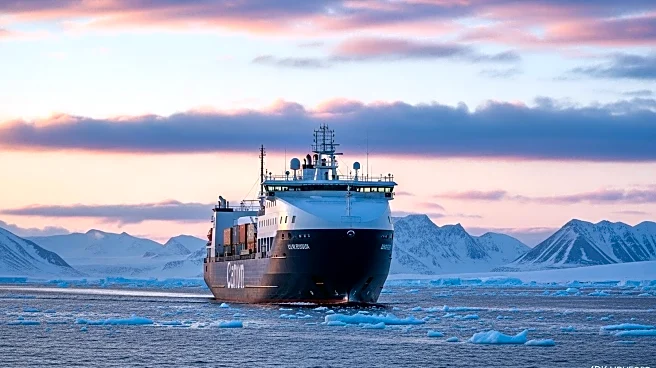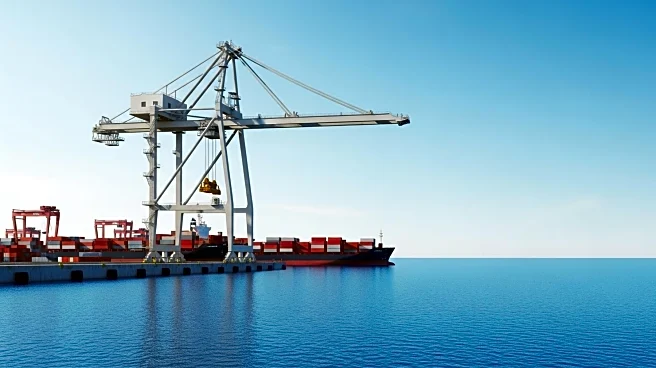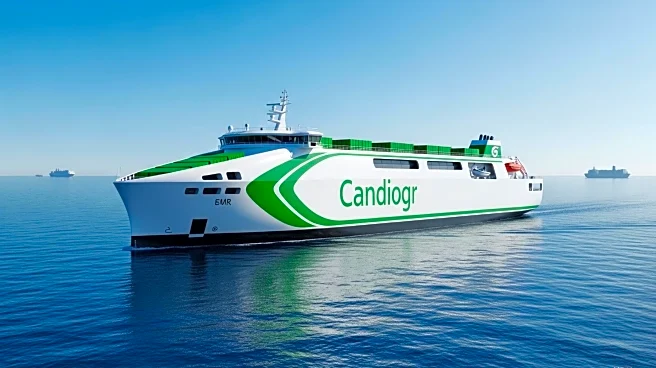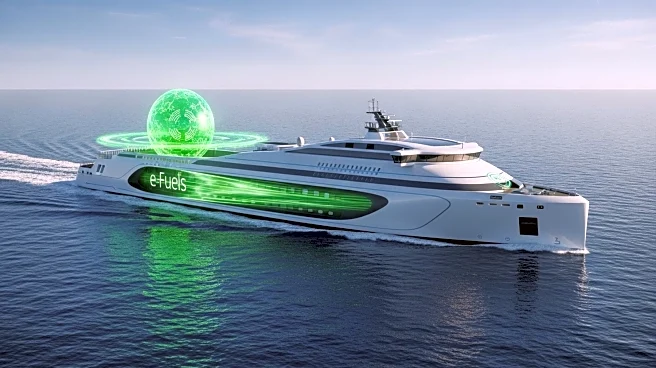What's Happening?
Drewry Maritime Research has identified a growing disconnect between freight rates and charter markets in the container shipping industry. Despite falling spot freight rates, charter rates have continued
to rise, currently standing at approximately 200% above 2019 levels. This trend is attributed to tight vessel availability and long-term charter commitments that do not align with short-term market movements. Major liner operators like MSC and CMA CGM have absorbed significant volumes of second-hand tonnage, reducing the fleet available to non-operating owners. The liner-owned fleet share has increased from 54% in late 2019 to 64% in early October 2025, limiting market liquidity and strengthening owners' pricing power. Geopolitical disruptions, such as insecurity in the Red Sea, have led to longer voyage times as carriers reroute ships via the Cape of Good Hope, further reducing vessel availability and increasing demand for chartered ships. Drewry forecasts incremental year-on-year charter rate improvements for most vessel sizes up to 8,500 TEU in 2026, while average global freight rates are expected to decline by about 16%.
Why It's Important?
The divergence between charter rates and freight rates has significant implications for the shipping industry. As charter rates continue to rise, shipping companies may face increased operational costs, potentially affecting their profitability. The structural shift towards a higher liner-owned fleet share limits market liquidity, giving owners more pricing power and potentially leading to higher costs for shipping companies that rely on chartered vessels. Geopolitical disruptions and longer voyage times further exacerbate vessel availability issues, increasing demand for chartered ships and driving up costs. The focus on fuel-efficient and environmentally compliant vessels, driven by emissions-related regulations, adds a scarcity premium for compliant tonnage, impacting the industry's transition towards greener operations. The anticipated correction in the charter market could lead to a realignment of costs and pricing strategies, affecting stakeholders across the shipping and logistics sectors.
What's Next?
Drewry anticipates a correction in the charter market as demand growth slows, profit margins narrow, newbuilds enter the market, and Suez Canal transits potentially resume. This correction could lead to a stabilization of charter rates and a realignment with freight rates, impacting pricing strategies and operational costs for shipping companies. Stakeholders in the shipping industry, including liner operators and non-operating owners, may need to adjust their strategies to navigate the changing market dynamics. The focus on fuel-efficient and environmentally compliant vessels is likely to continue, driven by regulatory pressures, influencing fleet composition and investment decisions. As the market evolves, companies may explore new opportunities for growth and efficiency, potentially reshaping the competitive landscape in the shipping industry.
Beyond the Headlines
The ongoing disconnect between charter rates and freight rates highlights broader challenges in the shipping industry, including geopolitical disruptions and regulatory pressures. The focus on environmentally compliant vessels reflects a growing emphasis on sustainability and compliance with emissions-related regulations, which could drive long-term shifts in fleet composition and operational strategies. The structural shift towards a higher liner-owned fleet share may lead to changes in market dynamics, affecting competition and pricing power. As the industry navigates these challenges, stakeholders may need to consider ethical and strategic implications, including the impact of geopolitical tensions and environmental regulations on global trade and logistics.
